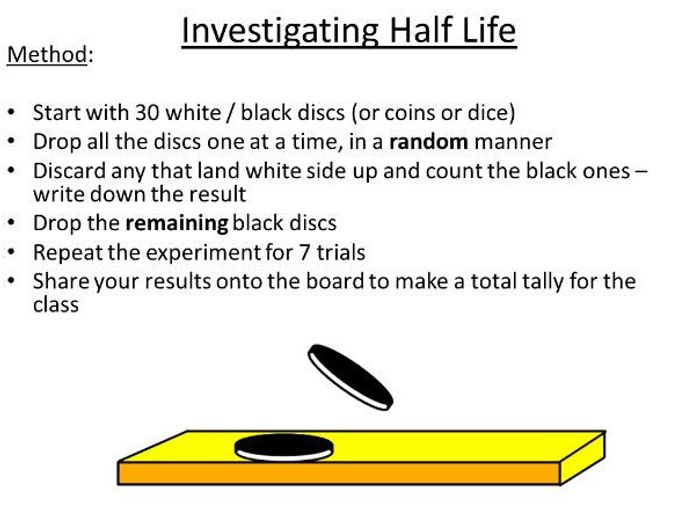

What if the valence shell is already full? With a partner, determine how many valence electrons each of the following atoms has:.
Atomic structure powerpoints full#
Atoms form bonds to achieve a full valence shell. Only electrons in the valence shell form bonds with other atoms. The outermost electron shell is called the valence shell. Each time you go across a row of the periodic table, you fill in a new shell of electrons. The first shell can only hold 2 electrons, so the first row of the periodic table only has 2 elements (hydrogen and helium). Each row of the periodic table represents one electron shell. Electrons fill up a lower shell first before filling up a higher shell. The second and third shells each hold eight electrons. Electrons move around the nucleus only at certain energy levels, called electron shells. “Of the three subatomic particles – protons, neutrons, and electrons – only electrons are directly involved in the chemical activity of an atom.” Why? Because electrons are responsible for forming chemical bonds. Meltdown sent radioactive isotopes into the air, water, and land. 1986 – nuclear meltdown in Chernobyl, Ukraine. Radioactive decay events give off huge amounts of heat that is trapped and used for power. Nuclear power plants use radioactive isotopes as fuel. Access code: SSNAST FLAIL OBEYS SIDED ASTIR VIRES. Therefore PIB shows us where beta-amyloid is. PIB emits beta particles that can be detected. PIB is a protein that binds beta-amyloid. Researchers have found high amounts of a protein called beta-amyloidin the brains of Alzheimer’s patients normal brain Alzheimer’s. Alzheimer’s is a disease that destroys memory and cognitive skills. Iodine 131 collects in the thyroid and emits beta particles, which tear through and kill the cancerous tissue. Patients with thyroid cancer are injected with small amounts of iodine-131. Iodine 131 is highly radioactive and emits beta particles. Why does this matter for cancer therapy?. Normal thyroid Goiter (Iodine deficient thyroid) Therefore, iodine is highly concentrated in the thyroid. The thyroid gland makes hormones that include iodine atoms. Imaging regions of Alzheimer’s disease. 
How is it useful in the lives of others?.
 How is radioactivity useful in my life?. Beta particles are a single electron Carbon-14. Alpha particles are made of 2 protons and 2 neutrons. Radioactivity is when an unstable nucleus shoots out certain particles in a process called radioactive decay. some isotopes are radioactive, like carbon 14 Carbon-14. They can substitute for each other in molecules. They form the same number of chemical bonds. Isotopes of the same element have most of the same properties. I’m prettier!!! We’re almost identical! Carbon-12 Carbon-14
How is radioactivity useful in my life?. Beta particles are a single electron Carbon-14. Alpha particles are made of 2 protons and 2 neutrons. Radioactivity is when an unstable nucleus shoots out certain particles in a process called radioactive decay. some isotopes are radioactive, like carbon 14 Carbon-14. They can substitute for each other in molecules. They form the same number of chemical bonds. Isotopes of the same element have most of the same properties. I’m prettier!!! We’re almost identical! Carbon-12 Carbon-14 
They have different atomic masses, but they’re all still carbon. Carbon-14 has 6 protons and 8 neutrons. Carbon-13 has 6 protons and 7 neutrons. Example: Carbon-12 has 6 protons and 6 neutrons. Atoms of the same element with different numbers of neutrons are called isotopes. Do I look fat?!!?!?! Atomic mass = 6 protons + 6 neutrons = 12 daltons *Never ask a lady about her atomic mass. Carbon’s atomic mass? I have 6 protons, 6 neutrons, and 6 electrons. Atomic mass (in daltons) = # of protons + # of neutrons Each has a mass of 1 dalton or 1 atomic mass unit (amu). Therefore the atomic number of an atom is equal to the number of its electrons. In an electrically neutral atom (no net charge), the number of protons is equal to the number of electrons. It is the same for all atoms of a given element. The atomic number is the number of protons in an atom. Electrons: negatively charged, in cloud around nucleus. Neutrons: neutrally charged, in nucleus. Protons: positively charged, in nucleus. What is an atom? An atom is the smallest unit of an element that still retains the properties of that element. Let’s get in the habit of doing this every day.












